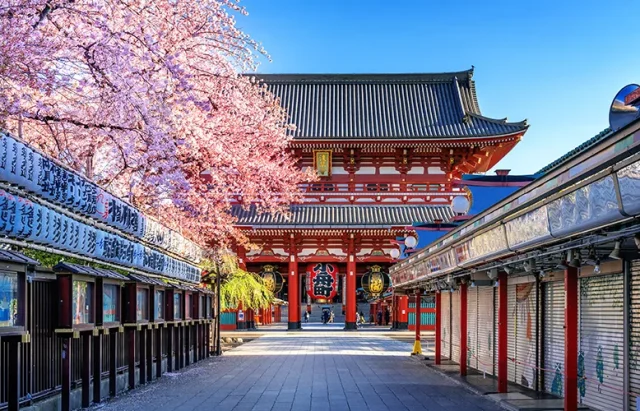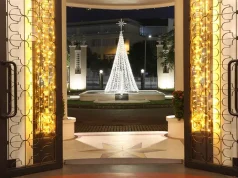
There’s a stillness that descends with nightfall in Japan’s cherry blossom season. The daytime energy of parks and riversides quiets, replaced by something softer, more intimate. This is yozakura—nighttime hanami—when sakura trees are illuminated from below, transforming already-beautiful petals into something dreamlike. The light and shadow play across delicate blossoms, inviting a slower, more reflective experience. For those seeking a unique and almost otherworldly view of Japan’s most iconic natural event, nighttime hanami delivers.
A Different Way to View Cherry Blossoms
Daytime hanami has its own kind of joy—picnics under blue skies, friends and families gathering beneath blooming canopies—but nighttime hanami feels almost like a secret. The crowds thin. The laughter softens. You’re not just looking at flowers; you’re stepping into a work of art created by nature and carefully lit by human hands.
Many parks and historic sites across Japan are known for their yozakura events. These spots set up temporary lights at the base of the trees, aiming upward to give the blossoms a glowing effect. The combination of the cool night air, warm lights, and soft pink hues creates a setting that feels both sacred and serene. Walking through these illuminated spaces often feels like drifting through a dream.
Where to Go for a Nighttime Hanami
One of the most famous places for yozakura is Maruyama Park in Kyoto. Located near Yasaka Shrine, the park hosts a stunningly lit weeping cherry tree that acts as a centrepiece to the whole experience. Visitors gather around in hushed tones, admiring how the petals glow against the dark sky.
In Tokyo, Chidorigafuchi near the Imperial Palace offers one of the most romantic settings for a nighttime stroll. Rowboats float through the moats lined with glowing sakura trees, their reflections dancing on the water’s surface. Even in a bustling city, it feels peaceful and intimate.
Hirosaki Park in Aomori and Takada Castle Park in Niigata also host elaborate night-time illuminations that are worth planning a trip around. These locations tend to offer fewer crowds than major urban centres, allowing for a quieter experience.
If you’re compiling your itinerary and looking for best practices for soaking in Japan’s seasonal highlights, make sure to include one evening under the cherry blossoms.
What to Expect During Yozakura
Unlike daytime hanami, where large groups often bring tarps, food, and drinks for extended picnics, nighttime hanami tends to be more about walking and appreciating. Some places do allow evening picnicking, especially during festivals, but it’s generally quieter, with more people opting for a gentle stroll rather than a gathering.
Food stalls may still be open during these hours, particularly in high-traffic hanami spots. These stalls sell warm street food—like yakitori, okonomiyaki, and sweet taiyaki—perfect companions for a chilly spring evening. You might also find warm sake or seasonal drinks to sip while you wander.
It’s also worth dressing in layers. Even in late March or early April, the nights can be cold, especially in northern areas. Bringing a camera or smartphone is a must—just be mindful of flash photography and the peaceful atmosphere many seek during these walks.
Why Yozakura Leaves a Lasting Impression
Part of what makes yozakura so memorable is its fleeting nature. The sakura season already spans just a few weeks, and the window for nighttime illuminations is often even shorter. There’s a particular magic in knowing that what you’re experiencing is temporary—perhaps only available for a few nights each year. It encourages presence. You’re not there to capture the perfect photo; you’re there to see.
The light makes the blossoms appear almost translucent. Every movement of the wind becomes a poetic moment. Even the silence between groups feels part of the spectacle.
For those planning a trip to Japan, experiencing yozakura adds a new dimension to cherry blossom season. It’s not just about ticking off popular spots—it’s about stepping into something ephemeral and deeply sensory. The smell of the trees, the coolness of the air, the soft crunch of gravel underfoot—all of it comes together to create something you’ll carry long after the season ends.
Whether you’re staying in Tokyo, Kyoto, or venturing further afield, carving out an evening for yozakura is among the best things to do in Japan during spring.
Even if you’ve seen cherry blossoms a dozen times before, you haven’t really seen them until you’ve wandered beneath their soft glow at night.





